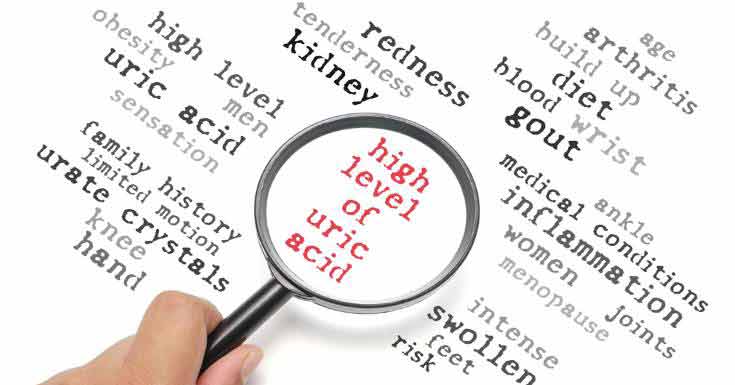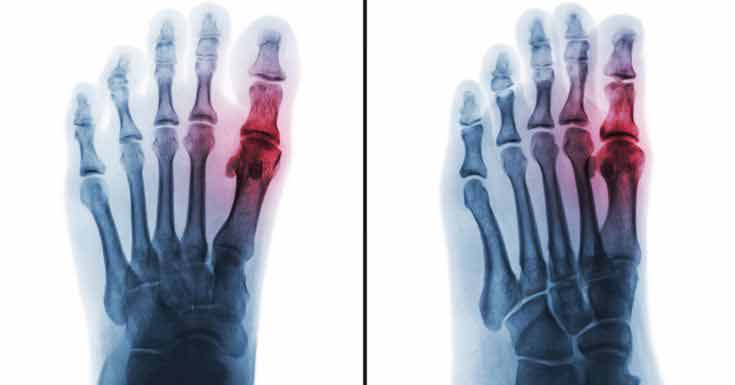Arthritis is an inflammatory condition, which can affect different joints throughout the body. It is common for the inflammatory process to be present at the level of the inferior limbs, affecting the hip, knee and ankle joint.
The smaller joints of the foot can be affected as well, with pain appearing as a natural consequence.
The treatment depends on the severity of the symptoms and the underlying condition; it can include oral and topical medication, as well as physical therapy and surgical interventions.
Keep on reading and discover more useful information on arthritis leg pain.
People also ask
Q. What vitamins are good for arthritis pain?
A. Nutritional deficiencies are common in arthritis sufferers which are why doctors often recommend their arthritis patient to take dietary supplements containing these nutrients to ease joint pain.. https://www.jointhealthmagazine.com/vitamins-for-arthritis-joint-pain.html
Q. What is Turmeric Curcumin Plus?
A. Turmeric Curcumin Plus is a natural dietary supplement, formulated to aid in boosting joint health and function. Its formulated from Turmeric, which is Super food and it functions well in boosting the general health and wellness of the consumer. https://www.jointhealthmagazine.com/turmeric-plus-review.html
Q. What supplement works best for joint pain?
A. Some consequences of aging – those grey hairs and crow’s feet, for instance – merely change the way we look. As we age on the outside, our joints and ligaments also get older, which often leads to joint pain. And unlike changes to our skin and hair..https://www.jointhealthmagazine.com/jointrelief
Q. How much glucosamine do I need?
A. Arthritis is a very common problem among the Americans. According to the statistics, around 22.7% of the American adults are diagnosed with some forms of arthritis, such as gout, lupus, rheumatoid arthritis, and others..https://www.jointhealthmagazine.com/whats-the-best-glucosamine-dont-take-the-wrong-kind.html
Q. What is the main cause of arthritis?
A. Arthritis is a condition that affects the body’s musculoskeletal system, mainly the joints. It’s reported that this condition is the main reason for disability among people over the age of 55 in the western countries..https://www.jointhealthmagazine.com/causes-of-arthritis.html
Q. What are the side effects of taking Omega XL?
A. Omega XL is a dietary supplement that is designed to help people with painful joints. The products is advertised as a natural supplement that uses handpicked ingredients. According to the producers..https://www.jointhealthmagazine.com/omega-xl.html
Q. Can allergies cause body aches?
A. Rarely do people associate joint pain with allergies. The truth however is that when allergies cause inflammation, joint pains are inevitable. Well, let’s first try to understand what allergies are .The Meaning of Allergies..https://www.jointhealthmagazine.com/how-is-joint-pain-tied-to-allergies.html
Q. What causes pain in the finger joints?
A. Imagine your fingers aching every time you use them. That could be awful. You cannot push a key on your laptop, complete a message on your Android phone, hit those guitar chords, thoroughly and thoroughly clean your body or the plate you used last night..https://www.jointhealthmagazine.com/finger-joint-pain.html
Q. What is in vital 3?
A. Vital 3 is a natural joint supplement that is sold and marketed to promote healthy joint muscles and at the same time to promote joint comfort and improve joint lubrication. As a long term joint care ingredient, this product is touted to work within the first six weeks..https://www.jointhealthmagazine.com/vital-3.html
How Does Arthritis Affect the Joints of the Leg?
When someone suffers from arthritis, inflammatory enzymes are secreted in excess. These can have a negative impact on the health of the joints, whether big or small.
If the inflammation lasts for a long period of time and the condition becomes chronic, additional symptoms such as pain and reduced range of motion can occur.
A vicious cycle occurs – the inflammatory process triggers the symptoms, preventing the patient from using the affected joints. Due to the lack of movement, the inflammation becomes worse.
The joints are affected by favoring factors as well, such as the aging process and physical injuries. A predisposition towards rheumatologic conditions can favor the appearance of arthritis and the subsequent leg pain.

What Are The Different Types Of Arthritis That Can Cause Leg Pain?
There are several different types of arthritis which can cause leg pain, among other symptoms. It is important to make a correct diagnosis and identify the type of arthritis, so that a suitable course of treatment is pursued.
Inflammatory Arthritis
This type of arthritis is characterized by a constant inflammatory process, which is not caused by a physical injury or accident. Apart from the actual leg pain, the patient can present a reduced range of motion (due to the pain and inflammation).
The condition affects not only the joints but also the tendons and ligaments, reducing the overall functionality of the patient in question. If treatment is not pursued the symptoms presented, the underlying bone can become damaged as well.
Among the most common types of inflammatory arthritis, there are: psoriatic arthritis, reactive arthritis, rheumatoid arthritis, colitis arthritis and ankylosing spondylitis.
Degenerative/Mechanical Arthritis
The aging process is primarily responsible for the appearance of degenerative/mechanical arthritis.
This condition can also be favored by physical injuries and accidents, as well as by pre-existent conditions, such as osteoporosis. The chronic inflammation leads to leg pain, which is often made worse by the cartilage damage.
The thinner the cartilage becomes, the more difficult it will be to move the affected joints. Once movement is restricted, pain becomes an even bigger issue.
It is also common that the body will produce excess bone tissue, in order to compensate for the existent damage. This will not restore the stability of the respective joint but will cause negative changes in the overall functioning.
Osteophytes are bony growths which appear at the level of the affected joints, making the pain worse.
A common type of degenerative arthritis is osteoarthritis, a condition which is often favored by previous inflammatory processes or fractures in the said joint.
Arthritis With Involvement Of The Soft Tissues

It can happen that the inflammatory process present in the joints of the leg extends to the soft tissues, aggravating the present symptomatology (including the leg pain).
When this happens, the whole dynamics of the leg is affected and the patient is prevented from engaging in daily living activities.
This type of arthritis is common in those who have overused their joints – for example, professional athletes, runners, joggers. Physical injuries can trigger the appearance of this form of arthritis as well.
The inflammatory process can stem from the soft tissues as well, affecting the joints as consequence. In making the diagnosis of arthritis, it is important to diagnose the root of the problem and treat it accordingly.
If the leg pain is severe, involving a large surface and being resistant to medication, the condition one is suffering from might be fibromyalgia.
Arthritis With Involvement Of The Connective Tissues
Connective tissues include tendons, ligaments and cartilages. When someone suffers from arthritis, it is possible that the inflammatory process extends and affects the connective tissues as well.
In such situations, the leg pain becomes more severe and the overall functionality is severely reduced.
As opposed to other types of arthritis, this type is progressive; the inflammation becomes worse with the passing of time and it can affect not only the connective tissues and joints but also the muscles, skin and vital organs, such as the lungs and the kidneys.
Examples of such medical conditions include systemic sclerosis, SLE and dermatomyositis.
Infectious Arthritis
As the name clearly shows it, this type of arthritis is caused by an infectious microorganism. This can be bacterial, fungal or viral, settling at the level of one or several joints.
When it affects the joints of the leg, pain and inflammation will become obvious symptoms.
The reduced range of motion will appear as a natural consequence and, given the fact that we are talking about an infection, the affected joint can appear red and warm to the touch.
Among the most common conditions that can favor the appearance of infectious arthritis, there are food poisoning/contamination (salmonella), STDs (gonorrhea, Chlamydia) and hepatitis C (often transmitted through contaminated needles, transfusions etc.).
Specific medication is required to treat the infection, otherwise, the respective leg joints can become permanently damaged.
Metabolic Arthritis

When uric acid accumulates in excess at the level of a joint, inflammation and pain will occur as symptoms.
This condition is known as metabolic arthritis or gout; the crystals of uric acid are also presented as purines and they often affect the joints of the big toe, preventing the patient from walking or bearing weight on the respective foot.
It often happens that the uric acid accumulates in high quantities at the level of a joint, in a very short period of time.
This can lead to what is known as a gout attack, which is characterized by severe inflammation and intense leg pain. The affected joints are warm to the touch and a pulsating sensation can be present.
Want quick relief from leg pain? Explore Hyland’s Leg Cramps Review which could be a solution to your leg problems.
Can Children Suffer From Arthritis Leg Pain?
The answer is yes. In fact, there are many different types of arthritis that affect both children and adolescents, causing leg pain among other symptoms.
It is important to identify these symptoms at an early stage, in order to pursue a correct course of treatment and prevent the respective joints from becoming permanently damaged.
Among the most common types of arthritis that can cause leg pain, there are: rheumatoid arthritis, chronic arthritis and idiopathic arthritis.
All of these are juvenile forms of arthritis and, apart from the pain and inflammation, they can cause a reduced range of motion in the affected joints.
Can Arthritis Represent A Medical Emergency?
In the situation that the patient presents high fever, severe inflammation and leg pain, he/she might suffer from what is known as septic arthritis.
This is a medical emergency, requiring immediate intervention; if the condition is not treated in due time, life-threatening symptoms can occur and the risk of death becomes considerably higher.
Septic arthritis is often caused by fungal or bacterial infections; it often happens that the same bacteria that caused gonorrhea leads to this condition as well.
It is common for the joints of the hip and knee to be affected by this infection, with a negative impact on the entire leg.
This condition is present in both children and adults, especially in those who have a compromised immune system.
Favoring Factors

There are a number of factors that can favor the appearance of arthritis and, thus, of the associated leg pain.
Physical injuries are often to blame from such problems, whether they result from contact sports, accidents or lack of attention.
An abnormally functioning metabolism can lead to gout and pseudogout, affecting the joints of the toes in particular.
Genetic predisposition can increase the risk of osteoarthritis and rheumatoid arthritis, causing the joints to become damaged at an early age.
Infections are commonly responsible for different types of arthritis, as you have been able to read above. The longer the infection is left untreated, the more complicated it will be to treat the affected joints.
Last, but not least, a poorly functioning immune system can lead to arthritis – rheumatoid arthritis and SLE are only two of the many examples that could be offered.
See More: Endometriosis Joint Pain – Learn About Its Causes And Solutions
Conclusion
If you present pain at the level of the leg, do not hesitate to visit the doctor and get yourself checked out. Keep in mind that many forms of arthritis can progress and damage the affected joints irreversibly.
The earlier you start the treatment for your condition, the better the final outcome is going to be. You might also want to consider eating healthy, as this will keep the joints strong and functioning. Physical activity should not be avoided; on the contrary, you should try to remain as active as you possibly can.
Feature Image: Shutterstock.com
In-Post Image: M assagetutor.com & Shutterstock.com







 This article changed my life!
This article changed my life! This article was informative.
This article was informative. I have a medical question.
I have a medical question.
 This article contains incorrect information.
This article contains incorrect information. This article doesn’t have the information I’m looking for.
This article doesn’t have the information I’m looking for.